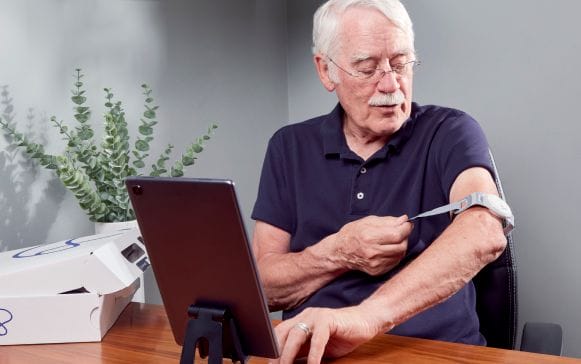Study: US Military Sees Facility-Level Cost Savings in the First Year of Virtual Care Program
There is no doubt that the healthcare industry is grappling with far-reaching and long-term challenges. As leaders strategize how to adapt to shifting utilization, high costs, and changing consumer preferences, attention is increasingly turning to the question of how much of a difference can virtual or care-at-home programs make?
Based on peer-reviewed research published in the Journal of Medical Internet Research (JMIR), it doesn’t take a large patient population to see an effect on cost of care at the facility level.
The study, Financial and Clinical Impact of Virtual Care During the COVID-19 Pandemic: Difference-in-Differences Analysis, reveals care at home has the potential to offer substantial cost savings—without adversely affecting clinical outcomes.
Background
Virtual care (VC) and remote patient monitoring programs were deployed widely during COVID-19. But they were diverse and evolved as the pandemic progressed, which made it difficult to measure their effectiveness.
Unlike many VC and remote patient monitoring programs that were deployed widely—and quickly—in response to COVID-19, the U.S. Military Health System (MHS) had a standardized VC program and numerous similar treatment facilities, some of which were participating in the program. Because of this, studying its effectiveness using direct comparison amongst centers with and without the program was possible.
About the study
The study focused on:
- How long patients stayed in the hospital and cost savings associated with care at a facility with the VC program
- How often patients were readmitted to the hospital with the VC program within 30 days after discharge, and
- How well patients in the VC program adhered to wearable devices and alarms
Study participants included 1,838 patients over age 21 who had COVID-19 and were admitted to a Military Treatment Facility (MTF) with a VC program (out of 3,988 admitted in the MHS in total between December 2020-21). Of these 1,838 patients, 237 (13%) were enrolled in the VC program.
Patients’ vital signs were continuously monitored at home with a Current Health wearable, and reviews of this health data were conducted once or twice a day, in addition to responding to alerts in real-time.
Study Results
Cost Savings
Centers with the program had a 12% lower length of stay averaged across all COVID-19 patients, saving $2,047 per patient. Importantly, the cost savings were notable within the care of every COVID-19 patient (VC and inpatient) at a MHS participating in the program—suggesting that the downstream effects of care-at-home programs are far-reaching.
The total cost of equipping, establishing and staffing the VC program was estimated at $3,816 per day. This resulted in a total net savings estimated at $2.3 million dollars in the first year of the program across the MHS.
Clinical Outcomes
- 12% lower length of stay averaged across all COVID-19 patients at an MTF with a VC program
- 85.7% of VC patients were monitored at home and then directly discharged
- 11.4% of VC patients were escalated to a physical hospital bed
- No increases in 30-day readmissions or emergency department visits at MTFs with a VC program
Activation and Adherence
Among patients in a VC program:
- 97.5% patient activation rate with the Current Health device
- 7.9 median days each patient was monitored
- 85% wearable adherence rate
- 1.6 vital sign alarms per patient per day (median)
Conclusion
As healthcare leaders chart the way forward in an increasingly challenging environment, it will be increasingly important that evolving care delivery models strike the balance shown in this study—cost savings and stable or improved clinical outcomes.
Download the study overview and key results


